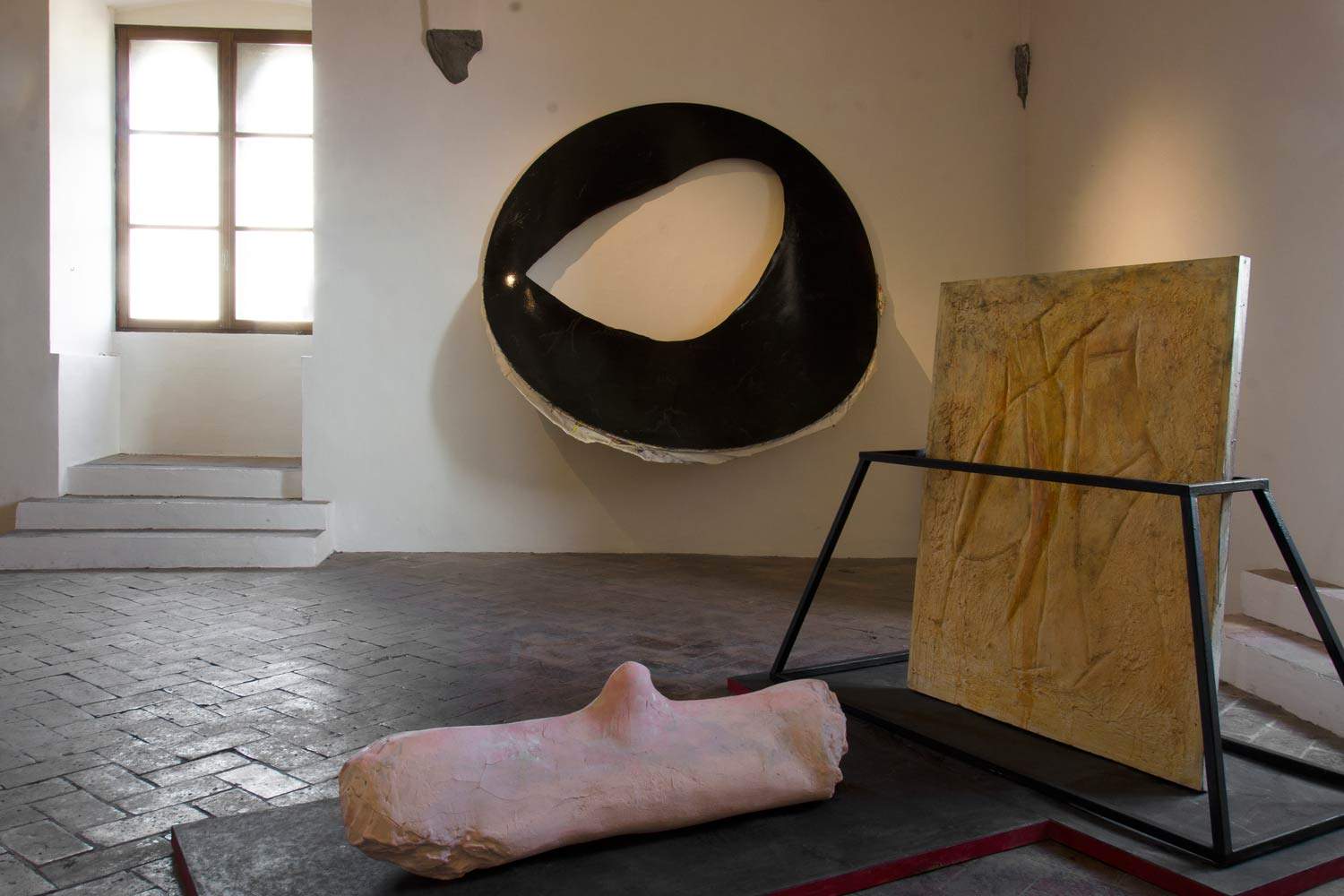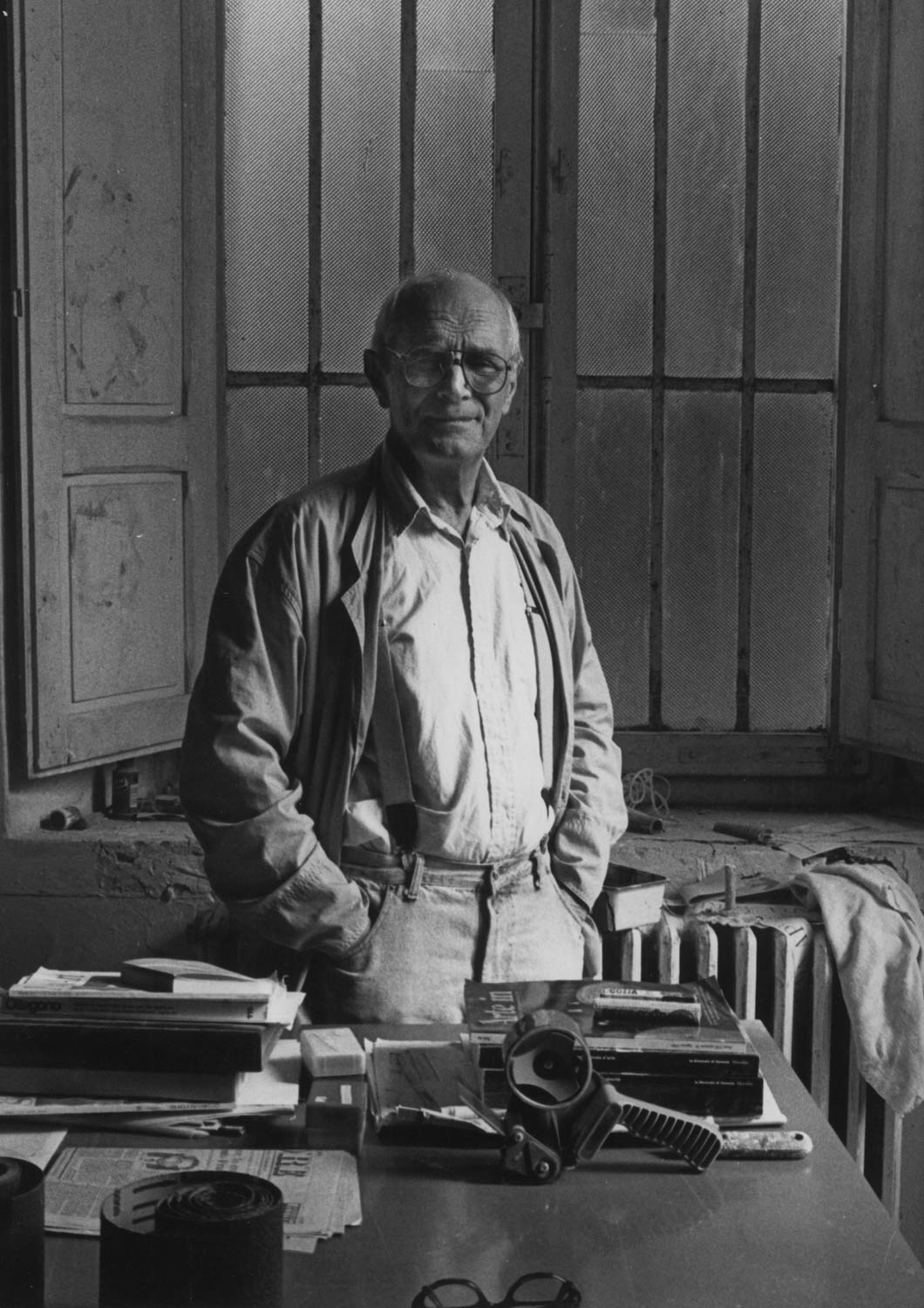In the centenary year of Mino Trafeli (Volterra, 1922 - 2018), sculptor, organizer of important cultural events such as Volterra 73, and scholar of local realities (including NOF4 graffiti), the city of Volterra dedicates two separate and complementary exhibitions to the artist. They are Mino Trafeli: Impossible Sculpture 2018-1980 and Mino Trafeli: Studies, Graphics, Sculptures, both curated by Marco Tonelli and the Committee for the Public Enjoyment of the Work of Mino Trafeli, and are held respectively at the Palazzo dei Priori and the Santa Maria Maddalena Study and Exhibition Center of the Fondazione Cassa di Risparmio di Volterra, both from July 9, 2022 to January 8, 2023.
Trafeli touched with his work all the most sensitive fields of Volterran culture, from alabaster work to the madness of the asylum, from teaching at the Art Institute to Etruscan history, showing for his city a rare and unique attachment for artists who are also capable of looking far beyond their own borders, having participated in two editions of the Venice Biennale of the Rome Quadrennial and many other exhibitions and important reviews, not to mention that his interests in the fields of music, video, performance and experimentation in general make him undoubtedly a protagonist of contemporary art miraculously dropped into a city of such ancient origins as Volterra.
Mino Trafeli: Impossible Sculpture 2018-1980 follows a three-year enhancement agreement made with the City of Volterra, which has included the event in the official program of Volterra22 First Tuscan City of Culture. The second floor of Palazzo dei Priori (which Trafeli had already used as his studio between 2001 and 2002) will display just under thirty works including large floor and wall sculptures and large drawings, plus a review of the most important videos made by the artist between the 1970s and 1980s. The exhibition follows a chronological criterion from the most recent to the oldest works, according to a three-year exhibition schedule that will run until 2024.
The exhibition Mino Trafeli: The Studios, Graphics, Sculptures presents graphic works and small-scale sculptures, plus a series of previously unseen shots of the artist’s various Volterra studios, taken for the occasion by photographer Fabio Fiaschi, testifying to a very close relationship between places of production and work, creativity and connection with the space of everyday life. Thegraphic work, on the other hand, includes a large series of works (lithographs and etchings) made by Trafeli between 1963 and 1980, which together with small-scale sculptures in bronze, alabaster and wood, give an idea of the linguistic openness of Trafeli’s work to all kinds of experimentation both on his own poetics and on the history of art, which the Volterra artist, after all, was continually rethinking, as his graphic and plastic tributes dedicated to Duchamp, Brancusi, Braque, Klimt, and Michelangelo attest in the exhibition.

Mino Trafeli was born in Volterra on December 29, 1922. Between 1957 and 1966 he joined the Galleria delle Ore in Milan, holding several solo exhibitions there. In 1955 he was invited for the first time to the Quadriennale in Rome, while in 1957 he was present at his first International Sculpture Biennial in Carrara, and in 1960 he was included in the group exhibition Scultura Italiana at the Musée Rodin in Paris. In 1963 he was invited to the São Paulo Biennale in Brazil. For the Galleria delle Ore editions, critic Franco Russoli will edit the first monograph on the artist in 1964. In 1964 he was invited to the XXXII Venice Biennale, his first participation in the great international art exhibition, while in 1965 he was at his second International Sculpture Biennale in Carrara, followed by participation in the 1969 edition. In 1973, together with critic Enrico Crispolti, he produced the event Volterra 73. Edited by Crispolti, the second monograph dedicated to the artist entitled Mino Trafeli: sculptures 1968 - 1973 will be published in 1973. This same year he is invited to the Quadriennale in Rome and the Metal Biennale in Gubbio, while in 1975 he holds the solo exhibition A come arte come amore come Africa come Addio Rimbaud at the Corsini Gallery in Intra. Irony, beginning with the exhibition Con impossibilità at the Galleria Antidogma in Turin in 1974, became one of the fundamental characters of his work, along with play and deconstruction of objects, sculpture, sign, sound, and images. On this theme he held his solo exhibition Provocation of the Object at the Museo Civico di Penne in 1975. In 1980 he was commissioned to set up an environment to raise awareness of Law 180, which overcame the repressive condition of asylums. It was during this period that he discovered in the Volterra asylum the graffiti that Oreste Fernando Nannetti had carved on the wall of the “Ferri” ward, This monumental “book of life” became a volume entitled NOF 4.
The 1980s will also see him engaged in the relationship between art and theater or in video works with a performative and actorly character. In 1983 he made the last three scale orders of the Tower of Pisa for the urban theater Gioco Parallelo. In 1995 he is selected by Gillo Dorfles for the XLVI Venice Biennial, where he will present the large environmental space entitled Tempo sommerso: ritorno non ritorno di Ulisse. In 1998 he is invited for the fourth time to the International Sculpture Biennial in Carrara, and in 1999 the large monograph Mino Trafeli. Ambiguity of Time, edited by Marco Tonelli and published on the occasion of the sculpture exhibition at Palazzo dei Priori in Volterra. In 2003 the Museo Piaggio Giovanni Alberto Agnelli in Pontedera dedicated an exhibition to him entitled Trafeli 2003. Terra Fabbrica Terra while in 2005 he was invited for the fourth time to the Quadriennale in Rome. In 2006, commissioned by the Region of Tuscany, the Province of Pisa, the Piaggio Foundation and the municipalities of Ponsacco, Lajatico and Pontedera, the Trafeli Shipyard was held. The same year, again with the support of the Tuscany Region, the publication Mino Trafeli imbalances was released. In 2012 the fourth and final monograph on his work entitled La scultura di Mino Trafeli ragionata da Marco Tonelli was published. In 2015 he participated in the event Volterra 73.15, presenting his most recent works and showing once again his creative vivacity and constant desire for research. Over the years Trafeli has maintained deep relationships with the territory, creating monuments of civic commitment, such as the Monument to the Resistance for the Province of Pisa and the July 1 Memorial in Volterra from 1966 or the Monumental Complex for Freedom in Pomarance from 1950-1997, and also designing sculptures in urban space such as The Fisherman in Livorno from 1956, Lunar Crossing in Camugliano, Rotunda in Ponsacco and Origine Vespa in Pontedera from 2003. He died in Volterra on August 9, 2018.

 |
| Volterra dedicates two exhibitions to Mino Trafeli in centennial year |
Warning: the translation into English of the original Italian article was created using automatic tools. We undertake to review all articles, but we do not guarantee the total absence of inaccuracies in the translation due to the program. You can find the original by clicking on the ITA button. If you find any mistake,please contact us.